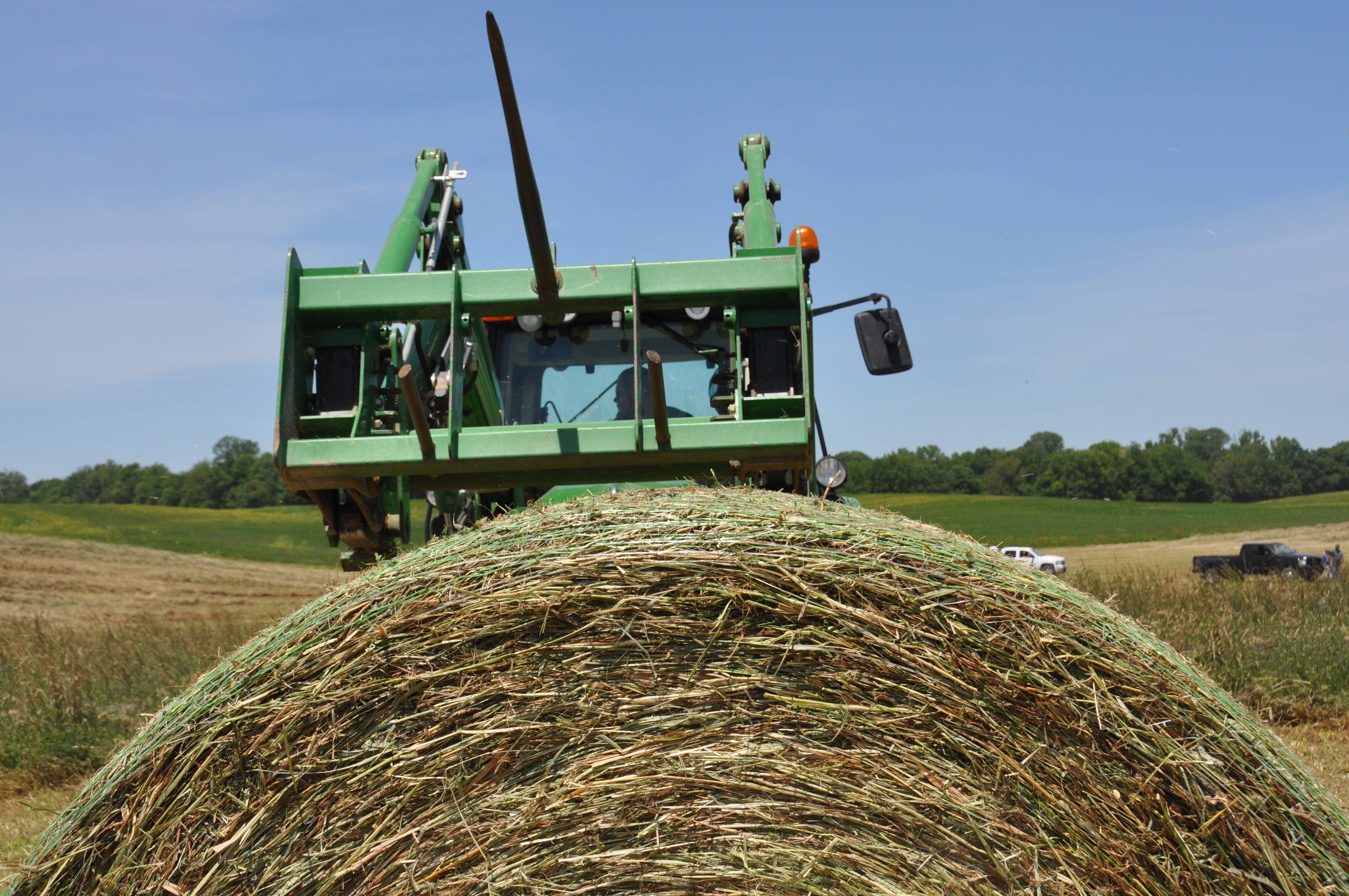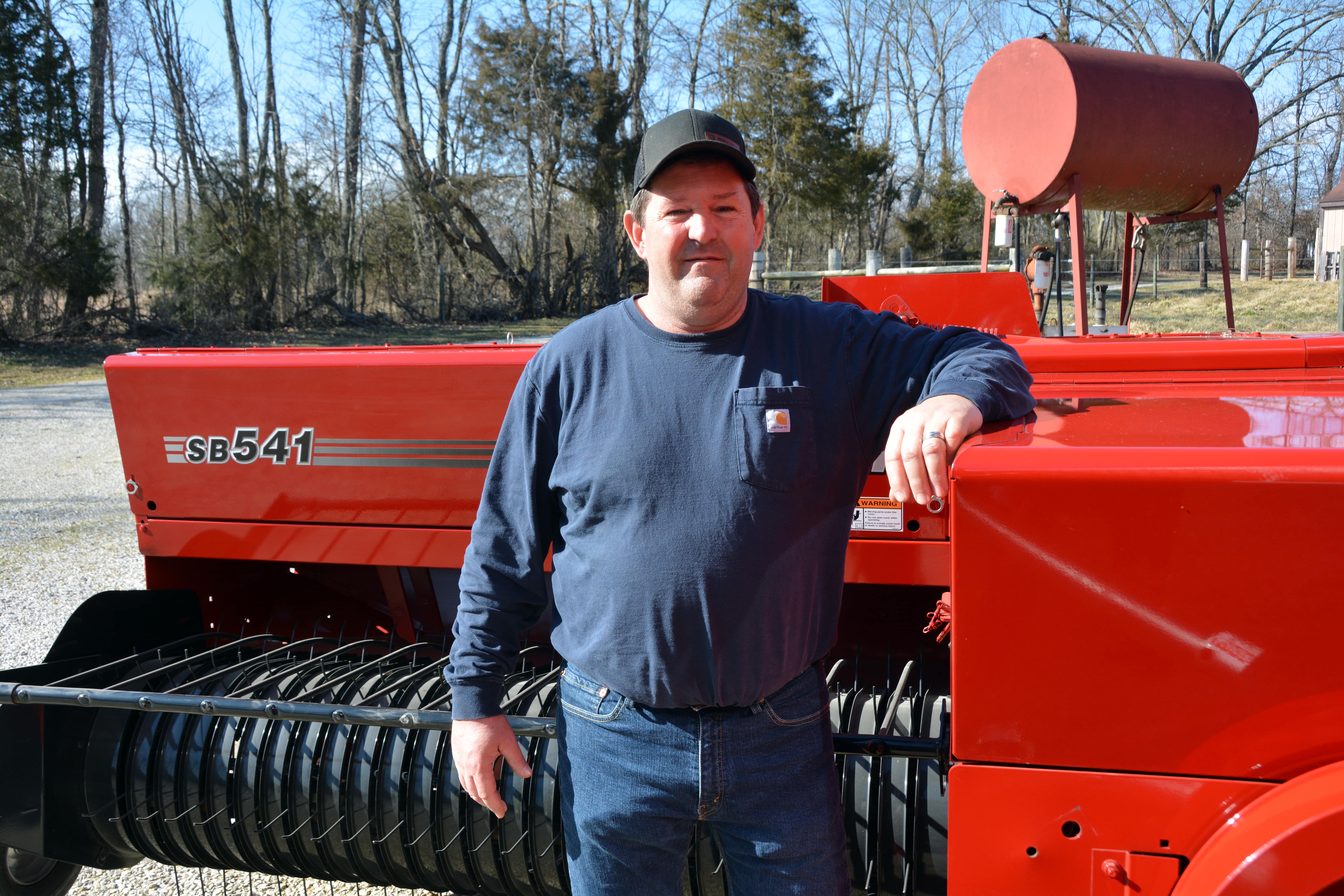Stay Informed
Market remains strong for high-quality hay, producers say
Compared to row crops, hay isn’t grown on that many acres in Indiana, but there’s a viable market for it, according to some Hoosier producers – so long as the quality is high.

“The demand for good quality hay is always out there, but it has to be quality,” said Robert Schickel, owner of Hay Day Farms LLC of Harrison County, which sells hay to local horse training farms, small retail businesses, seeding companies and for land reclamation. Most of the hay that Hay Day sells is brokered from other growers, but the Schickels still grow some of their own hay, particularly alfalfa-grass mixes.
High quality hay is hay that has no weeds or mold, has a good smell and color and a high protein content, he explained, adding that how high that protein content needs to be depends on what the hay is being used for. While pleasure horses need good quality grass hay, race horses need the very best quality, he said.
“But there’s always a demand for both,” he added.
Schickel added that he hopes to increase sales of his own hay, and that in his area, there’s a very high demand, particularly for 2nd-, 3rd- and 4th-cutting hay. He sells to a variety of customers, but his main market comes from the horse industry, from pleasure horses to race horses.
In 2021, hay was harvested from 540,000 acres in Indiana, with an average yield of 2.89 tons per acre. In all, Indiana’s 2021 hay crop was valued at $288.7 million dollars, according to the Indiana Agricultural Statistics Service.
Ron Crohn of Monroe County raises about 150 acres of hay, about half alfalfa and half an alfalfa-grass mix. He agreed that there is a big demand for hay, primarily from horse owners. That’s why his big seller is square bales, which is what is preferred by his customers. He still makes round bales, but those are mostly to feed his own cattle.

“I’m going to try to do more square bales this next year,” he said, adding that he currently averages about 12,000 square bales and sells out every year.
In contrast to Schickel and Crohn, Bruce Guernsey of Boone County feeds about 90% of the 75 acres of hay he grows to his own cattle. He does sell to other people in his area, mostly to other cattle producers, as well as a few people with sheep or goats. He grows a grass-clover-alfalfa mix as well as some festulolium and rye grass – a “good mix for cattle,” he said, although he added that he feeds it to his own horses.
“Mine aren’t too particular,” he added.
Larry Jernas of Starke County grows 75 acres of hay, all orchard grass-alfalfa mix, and while most of it is fed to his and his daughter’s 100 head of cattle, he markets about a quarter of it, mostly to horse owners in Starke, Marshall and LaPorte counties.
Prior to this winter, Jernas said, demand for his hay increased a little most years. But things changed slightly this winter. One factor is that the relatively mild winter decreased demand among his customers since the horses don’t eat as much. But he added that he thinks the high cost of feed might be decreasing horse numbers in his area.
“It’s tricky right now,” Jernas said.
In recent years, hay production has actually been declining slightly in the U.S., according to the National Agricultural Statistics Service, totaling 128.9 million tons in 2019, 126.8 million tons in 2020 and 120.2 million tons in 2021. While Indiana isn’t one of the major hay-producing states, it has bucked this trend, with statewide yields increasing from 3.1 million tons in 2019 to 3.7 million tons in 2020 to 4.1 million tons in 2021.




